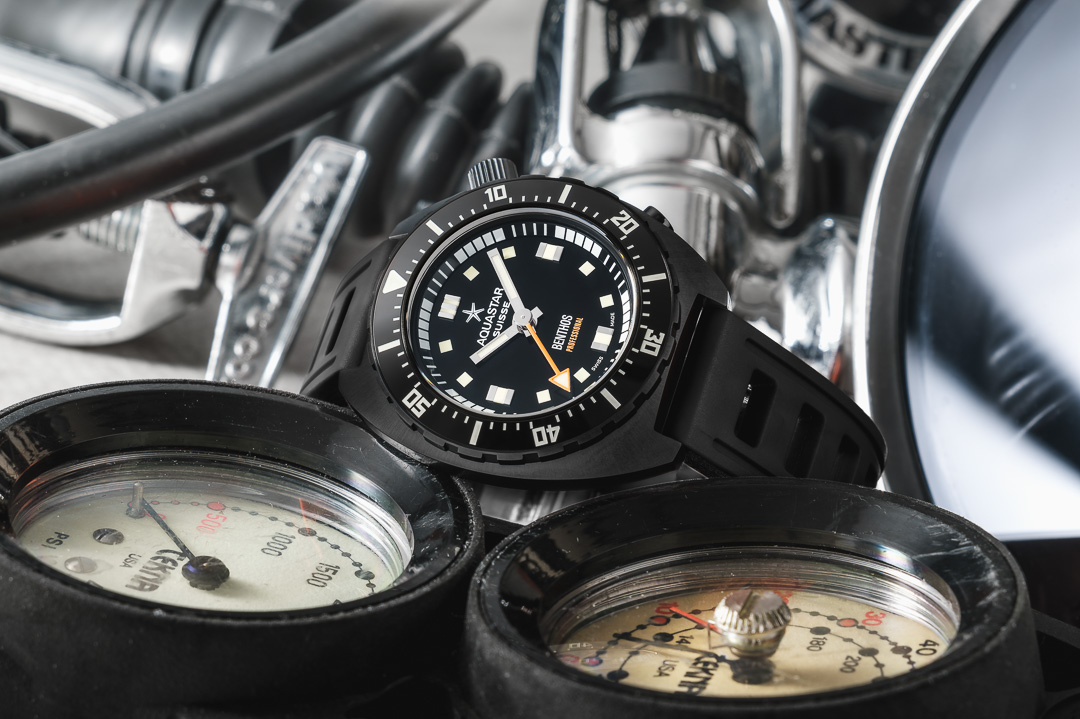Dive Watch Cases Explained: Complete Collector’s Guide
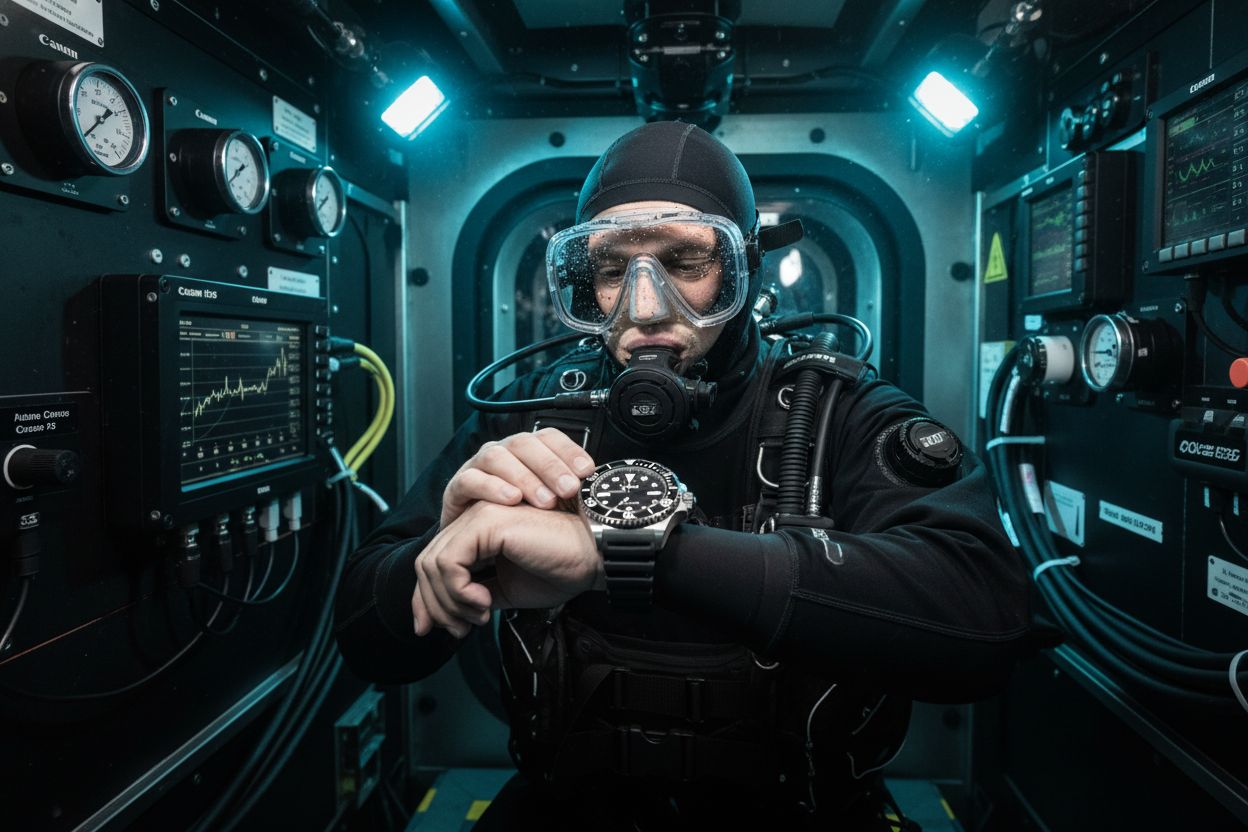
Over 90 percent of professional divers rely on their watches as a vital safety tool underwater. The design and structure of a dive watch case can make the difference between flawless timekeeping and critical equipment failure. Understanding what sets these cases apart reveals how advanced engineering and smart materials protect lifelines in the deep. If you want a timepiece that performs under pressure, knowing these details could help you avoid costly mistakes and stay safe below the surface.
Table of Contents
- Defining Dive Watch Cases And Their Purpose
- Types Of Dive Watch Cases And Innovations
- Materials And Construction Methods Compared
- Water Resistance Ratings And Testing Standards
- Common Pitfalls When Choosing Dive Watch Cases
Key Takeaways
| Point | Details |
|---|---|
| Purpose of Dive Watch Cases | Dive watch cases protect internal mechanisms from extreme underwater conditions while ensuring precise timekeeping. They must adhere to stringent standards like ISO 6425 for safety and functionality. |
| Innovative Design Features | Modern dive watches incorporate innovations such as helium escape valves and specialized gaskets that enhance water resistance and durability at great depths. |
| Material Selection | The choice of materials like stainless steel, titanium, and forged carbon is crucial for corrosion resistance and strength, impacting overall performance in marine environments. |
| Importance of Testing Standards | Dive watches undergo rigorous testing beyond basic waterproofing, ensuring reliability under pressure and various environmental conditions for professional divers. |
Defining Dive Watch Cases And Their Purpose
A dive watch case represents the critical protective housing that shields a timepiece’s delicate internal mechanisms from underwater environments. According to research from diving equipment experts, these specialized cases are engineered to withstand extreme pressure, moisture, and challenging marine conditions while maintaining precise timekeeping functionality.
The primary purpose of a dive watch case extends far beyond simple water resistance. The Deepstar bezel highlights how these robust cases must meet stringent international standards like ISO 6425, which mandates specific design requirements for professional diving instruments. Key protective features typically include:
- Hermetic sealing preventing water intrusion
- Reinforced materials resistant to corrosion
- Pressure-tested construction supporting depths over 100 meters
- Impact-resistant design protecting internal mechanical components
According to diving equipment research, professional dive watch cases represent a marriage of engineering precision and safety-critical design. Their fundamental goal is ensuring reliable performance in environments where millisecond-level accuracy could mean the difference between a successful dive and a potentially dangerous situation. Modern dive watch cases continue to evolve, incorporating advanced materials and manufacturing techniques that push the boundaries of underwater timekeeping technology.
Types Of Dive Watch Cases And Innovations
Dive watch cases have evolved dramatically, with manufacturers developing innovative designs to address the extreme challenges of underwater environments. Some groundbreaking approaches have revolutionized how timepieces protect their delicate internal mechanisms while maintaining reliable performance at significant depths.
One remarkable innovation involves specialized sealing techniques. According to research, the AQUASTAR Navigator exemplifies how advanced case designs can dramatically improve water resistance. Notably, the Amphibia watch demonstrates an ingenious approach where external water pressure actually enhances the case’s seal, creating a tighter protective barrier as depth increases.
Key innovations in dive watch case design include:
- Helium escape valves preventing internal pressure buildup
- Pressure-compensating mechanisms
- Specialized gasket materials resistant to saltwater degradation
- Reinforced crystal materials supporting extreme underwater pressures
Professional dive watch cases represent a sophisticated fusion of materials science and engineering precision. From titanium constructions offering lightweight durability to advanced ceramic compounds providing exceptional corrosion resistance, modern dive watch cases continue pushing technological boundaries. These innovations ensure that professional and recreational divers can rely on their timepieces in the most challenging maritime conditions.
Materials And Construction Methods Compared
Dive watch case materials represent a critical intersection of engineering precision and environmental durability. Stainless steel and titanium dominate the professional diving watch landscape, each offering unique advantages in challenging underwater conditions. According to research from diving equipment specialists, these materials are selected for their exceptional resistance to corrosion, structural integrity, and ability to withstand extreme pressures.
The Aquastar Benthos Heritage One exemplifies the cutting-edge approach to materials selection. Modern dive watch construction has expanded beyond traditional metals, incorporating innovative materials like forged carbon that provide extraordinary lightweight strength. Key material characteristics include:
- Corrosion resistance in saltwater environments
- High tensile strength
- Minimal weight for diver comfort
- Temperature stability across extreme conditions
Crystal construction plays an equally crucial role in dive watch durability.
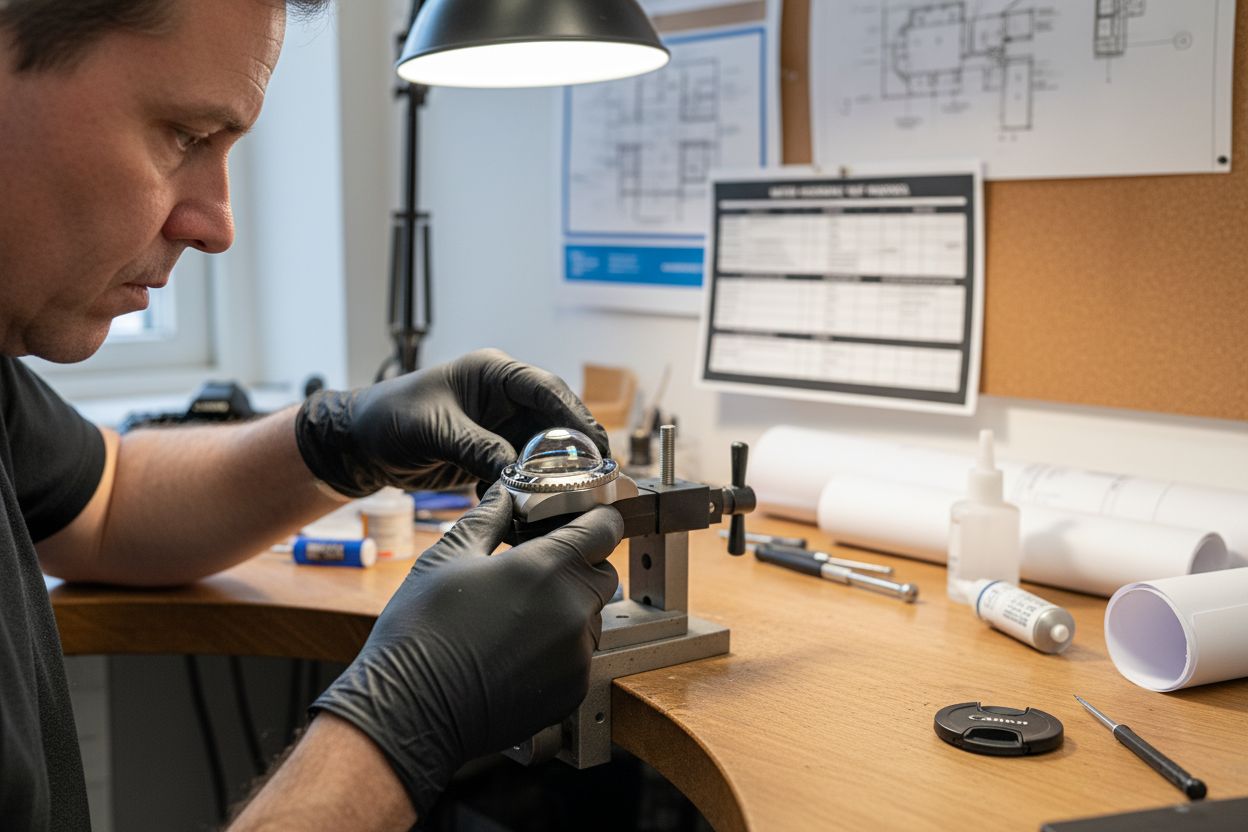 Sapphire crystals have become the gold standard, offering scratch resistance that significantly outperforms traditional glass materials. Strap options have also diversified, ranging from robust stainless steel to flexible rubber and technical fabric designs, each engineered to provide maximum comfort and functionality in marine environments. The evolution of dive watch materials continues to push the boundaries of performance, creating timepieces that are not just instruments, but reliable companions for underwater exploration.
Sapphire crystals have become the gold standard, offering scratch resistance that significantly outperforms traditional glass materials. Strap options have also diversified, ranging from robust stainless steel to flexible rubber and technical fabric designs, each engineered to provide maximum comfort and functionality in marine environments. The evolution of dive watch materials continues to push the boundaries of performance, creating timepieces that are not just instruments, but reliable companions for underwater exploration.
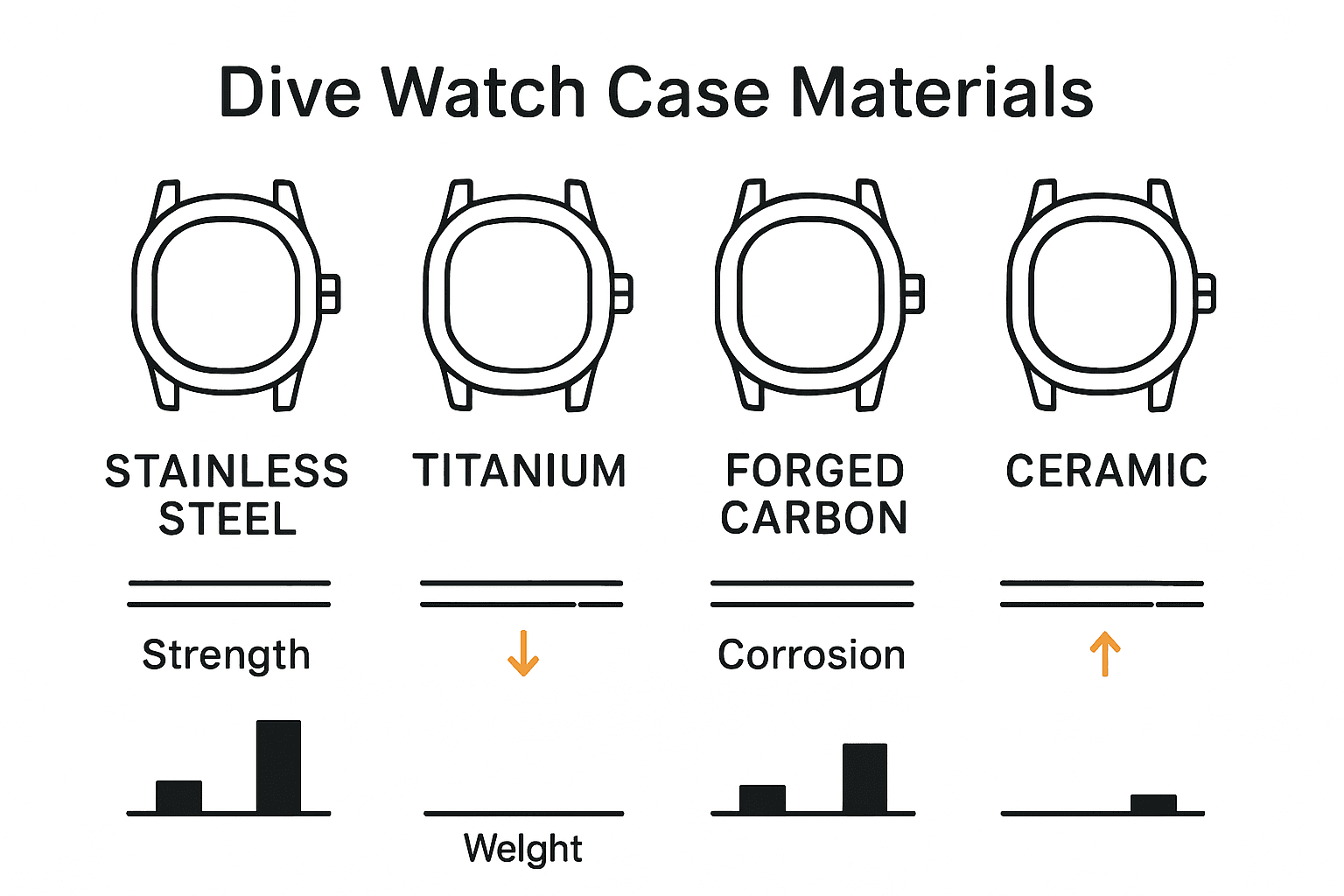
Here’s a comparison of common dive watch case materials and their key properties:
| Material | Corrosion Resistance | Weight | Strength |
|---|---|---|---|
| Stainless Steel | Excellent | Moderate | High |
| Titanium | Exceptional | Very Light | High |
| Forged Carbon | Outstanding | Ultra-Light | Moderate-High |
| Ceramic | Excellent | Light | Very High (brittle) |
Water Resistance Ratings And Testing Standards
Understanding water resistance ratings is crucial for dive watch collectors and underwater professionals. According to international standards, dive watches must meet stringent requirements that go far beyond simple waterproofing. The ISO 6425 standard mandates that professional diving timepieces demonstrate reliable performance under extreme underwater conditions.
The Aquastar Deepstar II represents a prime example of precision engineering in water resistance design. Professional dive watches are typically tested at 125% of their rated pressure, ensuring robust protection against water intrusion. Water resistance ratings typically range across several categories:
- 100 meters: Suitable for swimming and surface water activities
- 200 meters: Appropriate for recreational diving
- 300 meters: Recommended for professional and technical diving
- 500+ meters: Extreme depth professional diving instruments
Rigorous testing protocols extend beyond simple pressure measurements. Dive watches undergo comprehensive evaluations including temperature variation tests, saltwater exposure, and functionality assessments under simulated underwater conditions. These comprehensive standards ensure that professional divers can rely on their timepieces as critical safety instruments, providing accurate timekeeping and performance in the most challenging marine environments.
Common Pitfalls When Choosing Dive Watch Cases
Dive watch selection requires careful consideration beyond surface-level specifications. Many collectors and divers make critical mistakes when choosing their timepieces, overlooking crucial factors that impact underwater performance and long-term reliability.
The Aquastar Model 60 demonstrates how professional-grade watches address common selection pitfalls. According to diving equipment research, collectors often fall into several typical traps when evaluating dive watch cases:
- Overemphasizing depth ratings without considering actual diving requirements
- Neglecting seal integrity and potential age-related degradation
- Ignoring crystal readability under different water conditions
- Focusing solely on materials without assessing practical comfort
Professional divers understand that a watch’s effectiveness goes far beyond its technical specifications. Critical considerations include seal quality, crystal legibility, and genuine functional design. Watches with degraded seals can fail catastrophically, regardless of their impressive depth ratings. Smart collectors prioritize comprehensive performance, regular maintenance, and practical usability over marketing claims or aesthetic preferences. The most reliable dive watches balance sophisticated engineering with real-world dependability, ensuring they perform precisely when underwater conditions become most challenging.
Discover the Perfect Dive Watch Case for Every Depth
Choosing a dive watch case is more than picking a water-resistant timepiece. The article highlights challenges like maintaining seal integrity, ensuring crystal readability, and balancing toughness with comfort. These factors can mean the difference between reliability and failure underwater. Aquastar understands these critical needs with decades of expertise, evolving dive watches designed to withstand pressure, corrosion, and the hardest saltwater conditions.
Experience the blend of innovation and heritage with our professional dive watches. 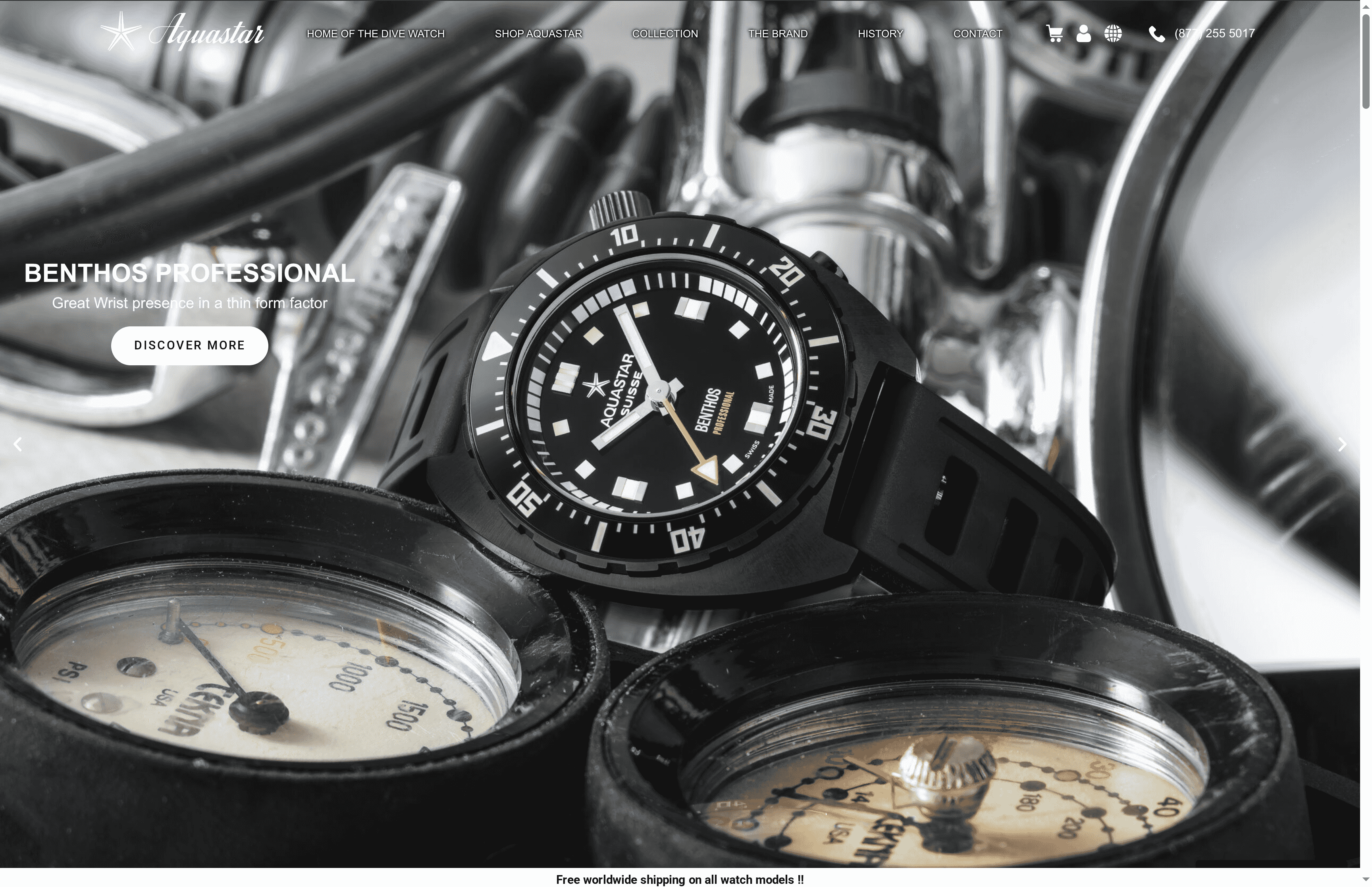
Take the next step in securing your underwater safety with a watch built by the pioneer who created the first skindiver case and analog dive computer. Visit Aquastar now to find a dive watch case engineered for your deepest and most demanding adventures.
Frequently Asked Questions
What is the main purpose of a dive watch case?
A dive watch case is designed to protect the internal mechanisms of a watch from extreme underwater conditions, such as pressure and moisture, while ensuring accurate timekeeping.
What are the standard water resistance ratings for dive watches?
Water resistance ratings for dive watches typically include 100 meters for swimming, 200 meters for recreational diving, 300 meters for professional diving, and 500+ meters for extreme depth diving instruments.
What materials are commonly used in the construction of dive watch cases?
Common materials for dive watch cases include stainless steel, titanium, forged carbon, and ceramic, each offering different strengths, weights, and corrosion resistance.
How can I determine the reliability of a dive watch’s seal and its suitability for underwater use?
To assess a dive watch’s reliability, check for comprehensive testing protocols, including pressure tests at 125% of the rated pressure, seal integrity, crystal readability, and the overall functional design intended for diving conditions.
